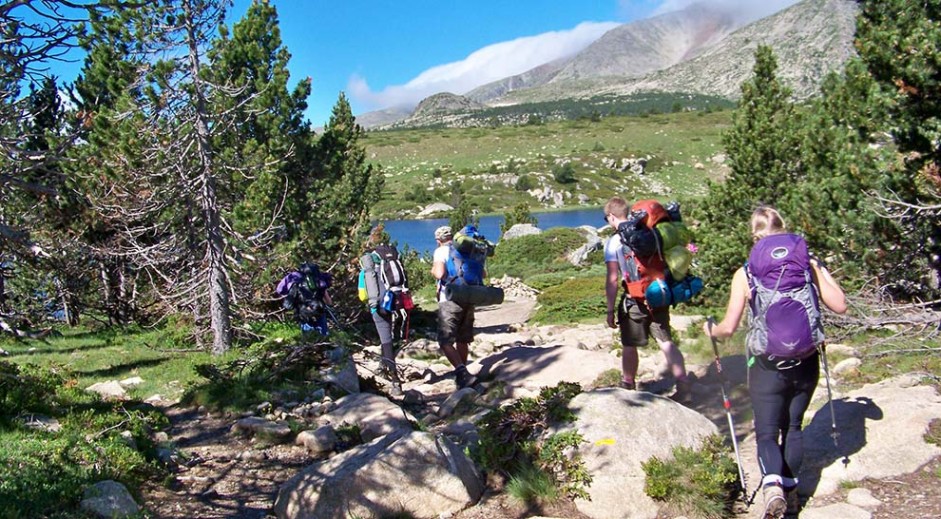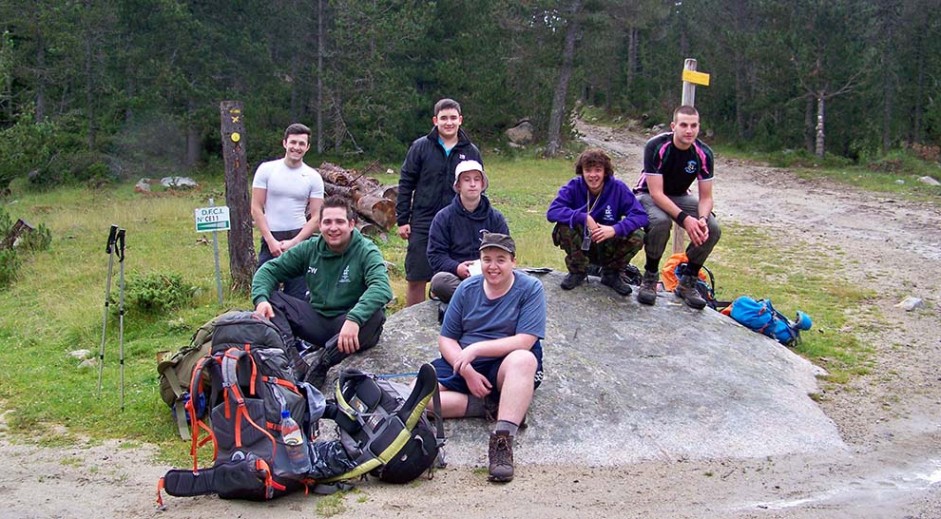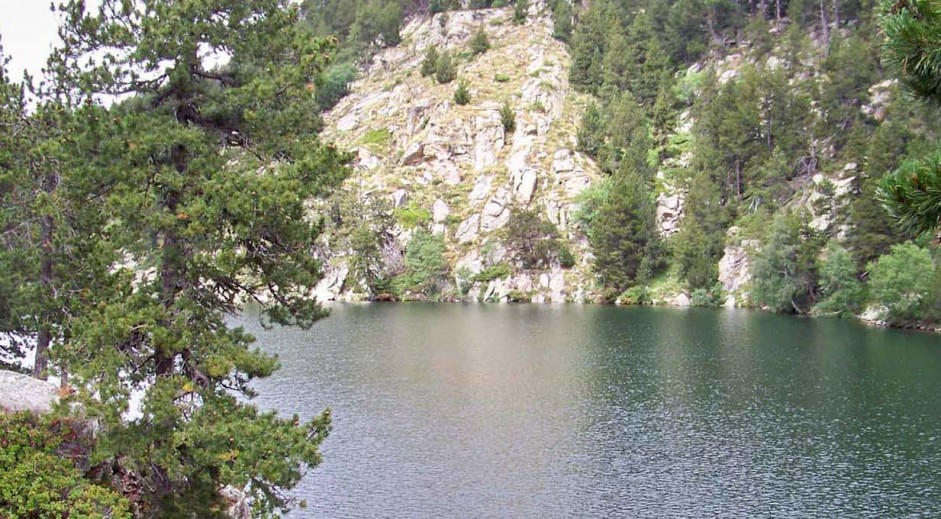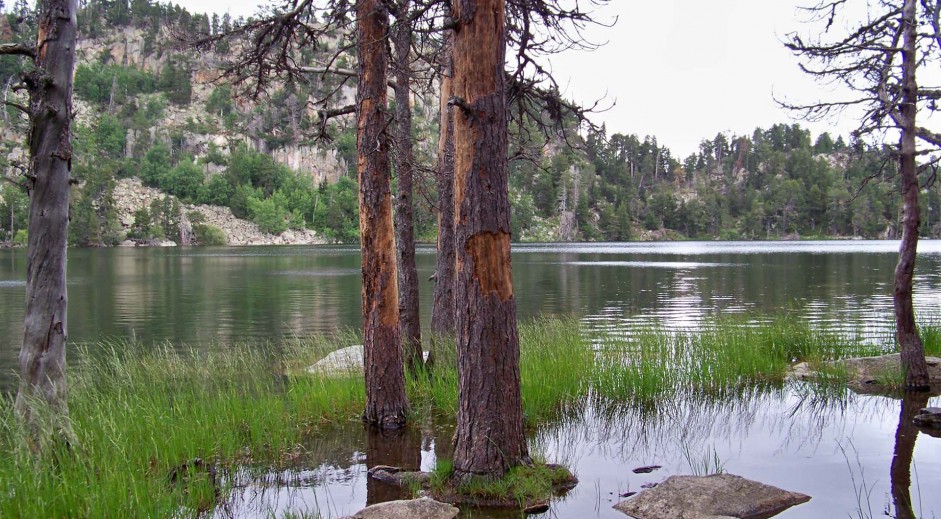D of E KIT LIST
bronze / silver / gold / overseas
Here is the kit list Indie Outdoors recommends each individual carries plus group equipment. We have made a few notes about certain items of equipment and stated where they should be carried ideally.
Individual Equipment:
| Item | Location | Notes |
| Map | in hand all the time! | |
| Compass | attached to rucksack/coat in easy reach | |
| Watch | er… on your wrist ‘innit | |
| Torch | bottom of rucksack | headtorch if you have one- definately a headtorch for gold |
| First aid kit | side pocket of rucksack | |
| Whistle | attached to rucksack | some rucksacks have a whistle as part of the shoulder strap |
| Emergency kit | top of rucksack | a small bag or pencil case containing the things noted below as belonging in your emergency kit |
| Coins/card for telephone | in emergency kit | |
| Notebook and pen/pencil | in emergency kit | |
| Waterproof jacket | middle – top of rucksack ready for when it rains | this is esential even if weather forecast says no rain |
| Water bottle | in side pocket of rucksack | sturdy one as disposable ones may break after repeated use |
| Expedition safety card | in emergency kit | optional in bronze and silver, found in Entrance Pack |
| Extra warm clothing | bottom of rucksack | |
| Bivvy bag/large poly bag | in or near emergency kit | an emergency sleeping bag made of orange plastic or aluminium |
| Waterproof trousers | in middle of rucksack | remember: this is England. It will rain. |
| Emergency food rations | bottom of rucksack but separate from normal food rations | |
| Matches | in camping kit | |
| Large rucksack | 55-65 litr capacity. Should always have both shoulder and waist straps. | |
| Strong plastic bags | lining rucksack and wrapped round anything you don’t want to get wet- especially matches and sleeping clothes | Rubble sacks are the best as they are very strong. Otherwise a gardening or household waste bag |
| Sleeping bag | wrapped in plastic at bottom of rucksack- not tied to outside of rucksack where it will get wet! | |
| Sleeping bag liner | camping kit | optional |
| Sleeping mat | wrapped in plastic very firmly and tied to outside of rucksack or placed inside if room | |
| Small sum of money | in emergency kit | remember you must not buy anything unless its an emergency even on practice |
| Plate/bowl | camping kit | no need for both |
| Mug | camping kit | plastic, metal or thermos style |
| Soap and towel (small) | camping kit | if you are really keen on keeping weight down cut a bar of soap in half or only have one bar per group |
| Tooth brush and toothpaste | camping kit | no need for more than one tube of toothpaste per group |
| Toilet paper | camping kit | couple of rolls per group |
| Camera | optional | |
| Boots | Waterproof. If new- make sure you wear them out for a few walks or even just round the house otherwise brand new boots will give you blisters. | |
| Socks | one per day plus one spare is a good rule | |
| T -shirts | made of wicking or quick dry material ideally but these can be expensive | |
| Sleeping clothes | camping kit (tightly wrapped as this is the most important thing that must not get wet!) | simple, light cotton night clothes |
| Sweater/fleece | middle of rucksack | ideally not cotton or wool as these materials do not dry once wet. A polyester fleece is ideal. No hoodies as if the hood gets wet it soaks through to the rest of your clothes. |
| Trousers | worn | one pair should be enough. Two on gold perhaps. LIghtweight quick dry walking trousers are ideal. |
| Underwear | camping kit | couple of pairs |
| Flip flops | flip flops let you walk about the campsite without either getting grass and dew on your feet in the morning or having to put your walking boots on | |
| Sun hat, sun cream, sunglasses | side pockets if sunny, middle of rucksack if not | if the weather forecaste is very definately saying no chance of sun then don’t bother but normally you should always have sun protection with you |
| Gaiters | optional- help keep your boots and trousers dry |
Group Equipment:
| Item | Location | Notes |
|---|---|---|
| Tent(s) | one person carry the poles and one person carry the material | Provided by Indie Outdoors |
| Stove | camping equipment | wrap in a plastic bag to prevent leakage of remains of fuel. Provided by Indie Outdoors |
| Fuel | hang from outside of rucksack | must be DofE approved fuel bottle. Only gold groups are expected to carry their own fuel bottles. Provided by Indie Outdoors |
| Matches | camping equipment | inside resealable plastic bag |
| Cooking pots | camping equipment | provided by Indie Outdoors |
| Soap pads or sponge with abrasive pad | camping equipment- inside resealable plastic bag | a brillo pad is a good trick as it removes stubborn stains on aluminium pans and does not need soap as its already impregnated with it |
| Washing up liquid | camping equipment- inside resealable plastic bag as may leak | no need if you use brillo pads! |
| Tea towel | camping equipment | |
| Water container | side pocket of rucksack | 1ltr capacity recommended. Sturdy one will last longer than a disposable plastic one which is only suitable for bronze |
| Food for main meals | camping equipment | see notes on food on Food page |
| Trowel | middle of rucksack, top or side pocket | gold only. For doing a poo in the wild |
| Route card(s) | side or top pocket of rucksack or inside coat | see the Route cards page for help on filling them in |
| Map cases | waterproof maps are a much better investment than a map case and much easier to use | |
| Pack of cards/game | forget bringing anything electronic- its batteries will die! | |
| Plastic bags (for rubbish) | you must take away and bin all your own rubbish. Don’t expect to find a bin anywhere near where you eat your lunch or dinner |
Accessibility
There are three levels of accessibility you need to think about when packing your rucksack. They are : things you need very often or need to be able to access in an emergency, things you might need or need occassionally during the day and things you won’t need until the evening.
The first category must be packed in the top or side pockets of your rucksack, placed in pockets of your coat or held in hand, and includes things like water, maps, compass and first aid kit.
The second category needs to be in the top or middle of the main body of your rucksack and includes things like your waterproofs and your layers of clothing. Think of things you might need if the weather changes for example.
The third category is things you couldn’t possibly need until you camp and therefore have time to unpack your rucksack completely in order to get at. These things can go at the bottom of your rucksack and include your tent, sleeping bag, cooking equipment and night clothes.
How to poo in the woods
This is an important consideration for gold expeditions. You are supposed to be wild camping and therefore there should not be a toilet anywhere in sight as you camp.
In order not to spoil the beautiful countryside through which you are travelling it is important to know how to poo properly. Here’s how.
You will need: a trowel, matches and toilet paper.
First: dig a hole in the ground
Second: poo in the hole
Third: cover up the poo with plenty of dirt, soil and leaves. The better covered the less likely it is that an animal will dig it up. Ideally place sticks or stones on top as well.
Fourth: carefully(!) set fire to the toilet paper and burn it completely. This might seem odd but toilet paper does not degrade very quickly and looks terrible if left lying around as it is bright white or pink and so shows up against the natural browns and greens of the countryside. Careful though I have know a DofE group set fire to the dry underbrush when they tried to do this. Make sure there is nothing flammable next to your toilet paper that might catch fire and make sure the paper goes out completely before leaving it.





